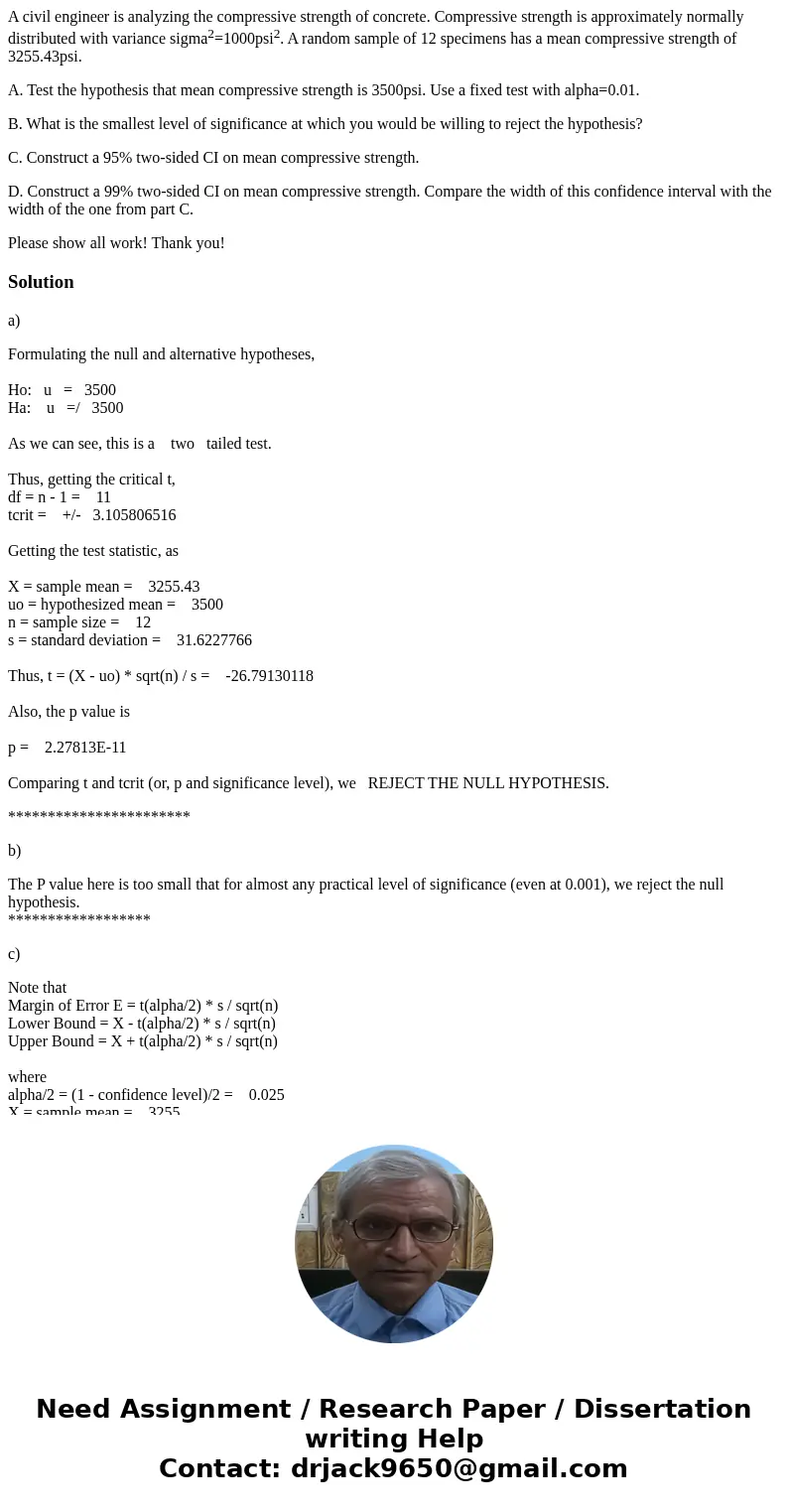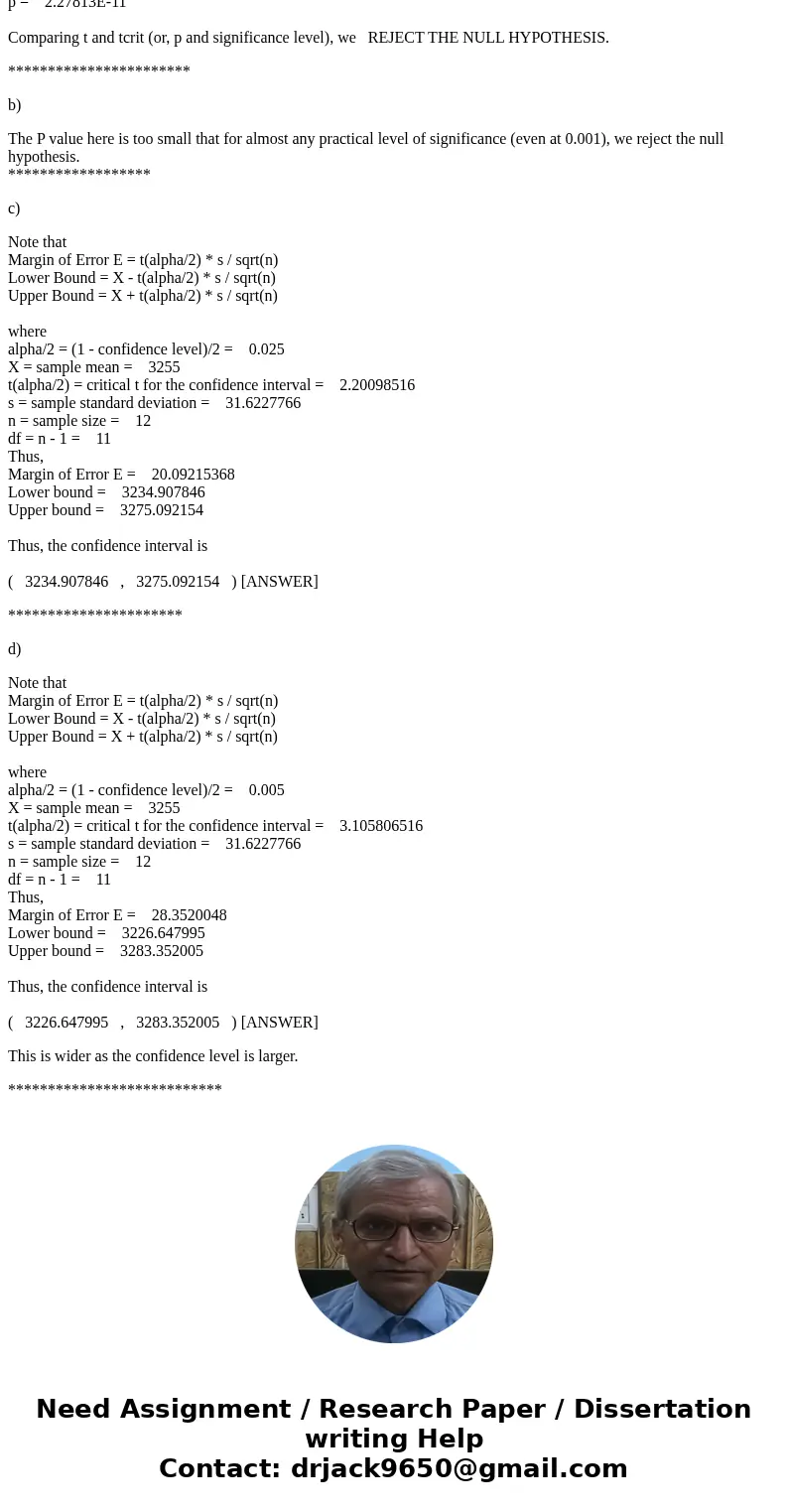A civil engineer is analyzing the compressive strength of co
A civil engineer is analyzing the compressive strength of concrete. Compressive strength is approximately normally distributed with variance sigma2=1000psi2. A random sample of 12 specimens has a mean compressive strength of 3255.43psi.
A. Test the hypothesis that mean compressive strength is 3500psi. Use a fixed test with alpha=0.01.
B. What is the smallest level of significance at which you would be willing to reject the hypothesis?
C. Construct a 95% two-sided CI on mean compressive strength.
D. Construct a 99% two-sided CI on mean compressive strength. Compare the width of this confidence interval with the width of the one from part C.
Please show all work! Thank you!
Solution
a)
Formulating the null and alternative hypotheses,
Ho: u = 3500
Ha: u =/ 3500
As we can see, this is a two tailed test.
Thus, getting the critical t,
df = n - 1 = 11
tcrit = +/- 3.105806516
Getting the test statistic, as
X = sample mean = 3255.43
uo = hypothesized mean = 3500
n = sample size = 12
s = standard deviation = 31.6227766
Thus, t = (X - uo) * sqrt(n) / s = -26.79130118
Also, the p value is
p = 2.27813E-11
Comparing t and tcrit (or, p and significance level), we REJECT THE NULL HYPOTHESIS.
***********************
b)
The P value here is too small that for almost any practical level of significance (even at 0.001), we reject the null hypothesis.
******************
c)
Note that
Margin of Error E = t(alpha/2) * s / sqrt(n)
Lower Bound = X - t(alpha/2) * s / sqrt(n)
Upper Bound = X + t(alpha/2) * s / sqrt(n)
where
alpha/2 = (1 - confidence level)/2 = 0.025
X = sample mean = 3255
t(alpha/2) = critical t for the confidence interval = 2.20098516
s = sample standard deviation = 31.6227766
n = sample size = 12
df = n - 1 = 11
Thus,
Margin of Error E = 20.09215368
Lower bound = 3234.907846
Upper bound = 3275.092154
Thus, the confidence interval is
( 3234.907846 , 3275.092154 ) [ANSWER]
**********************
d)
Note that
Margin of Error E = t(alpha/2) * s / sqrt(n)
Lower Bound = X - t(alpha/2) * s / sqrt(n)
Upper Bound = X + t(alpha/2) * s / sqrt(n)
where
alpha/2 = (1 - confidence level)/2 = 0.005
X = sample mean = 3255
t(alpha/2) = critical t for the confidence interval = 3.105806516
s = sample standard deviation = 31.6227766
n = sample size = 12
df = n - 1 = 11
Thus,
Margin of Error E = 28.3520048
Lower bound = 3226.647995
Upper bound = 3283.352005
Thus, the confidence interval is
( 3226.647995 , 3283.352005 ) [ANSWER]
This is wider as the confidence level is larger.
***************************


 Homework Sourse
Homework Sourse